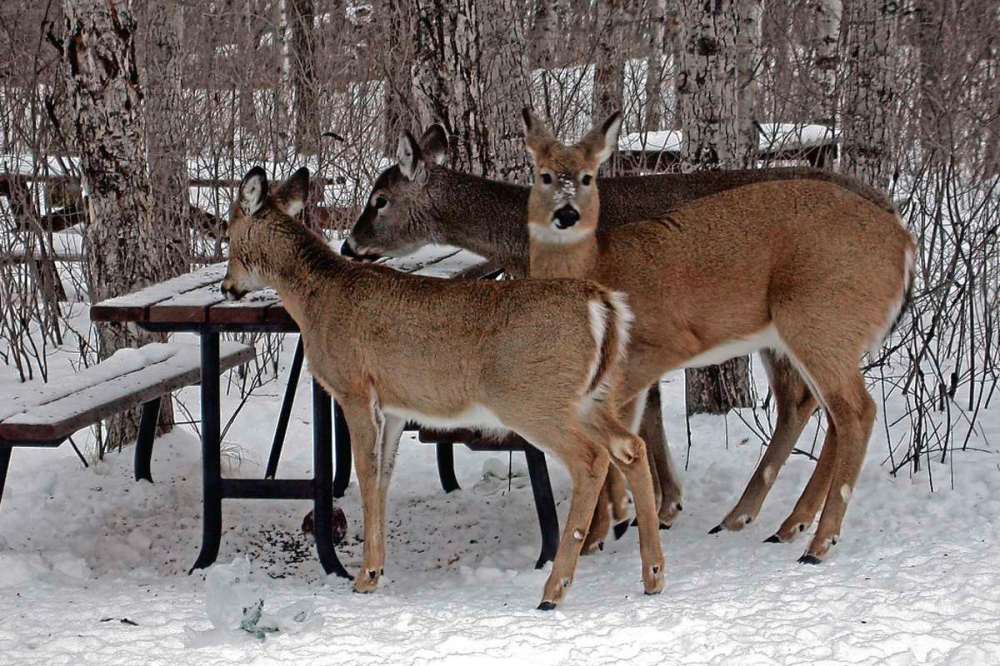Feeding deer does more harm than good
Advertisement
Hey there, time traveller!
This article was published 20/02/2018 (2807 days ago), so information in it may no longer be current.
Every winter, kind-hearted people with the best of intentions put food out to help local deer survive a long, cold winter. Every winter, some deer will die as a result.
Feeding deer in winter can lead to a condition called acidosis. High-carb/low-fibre foods create a flush of lactic acid within a few hours. This lowers the pH in the stomach and interferes with digestion and absorption. Acute acidosis can lead to bloating, diarrhea, and even death within 72 hours. Deer with bellies full of hay, grains, corn, and alfalfa have died of starvation in winter because they could not digest these high-carb foods.
Why can deer safely eat corn and other high-carb foods at other times of year?

The microbes in a deer’s rumen (stomach) adjust to the foods that are naturally available each season. From spring through fall, deer feed on high-carb items like leaves, corn, and acorns. In the winter, they browse mainly on high-fibre woody items (twigs, buds, bark, dead leaves, and even lichens). It takes several weeks for their “gut flora” to gradually adjust from a high-carb summer diet to a high-fibre winter diet.
In winter, a deer’s digestive system is fine-tuned to make the most of low-quality winter forage. The microbes in the gut cannot handle a flood of carbohydrates. Woody browse actually provides the right amount of protein, fat, and fibre deer need in winter. Apples, corn, bread, and other table scraps do not.
Feeding deer creates other problems as well. Deer may travel long distances to reach feeding stations. Not only does this burn valuable energy, deer may be hit by cars as they cross roads. High numbers of deer may transfer diseases and parasites to each other (bovine tuberculosis, chronic wasting disease, ticks, etc.). They may attract predators — potentially increasing risk to people and pets. Deer get more aggressive with each other as they compete for the food. They can endanger people if they become too tame.
High numbers of deer at a feeding station will over-browse and damage the nearby vegetation. This may cause long-term damage to the habitat. This harms deer and other wildlife that need these habitats for food, shelter, and nesting.
If you really want to help deer, focus on habitat improvement. Planting native trees or shrubs will provide valuable winter food and shelter for deer and a variety of other wildlife.
Michele Kading is a community correspondent for St. Vital and the executive director of Save Our Seine.

Michele Kading
St. Vital community correspondent
Michele Kading is a community correspondent for St. Vital. She is also the executive director of the Association of Manitoba Museums.
Our newsroom depends on a growing audience of readers to power our journalism. If you are not a paid reader, please consider becoming a subscriber.
Our newsroom depends on its audience of readers to power our journalism. Thank you for your support.




